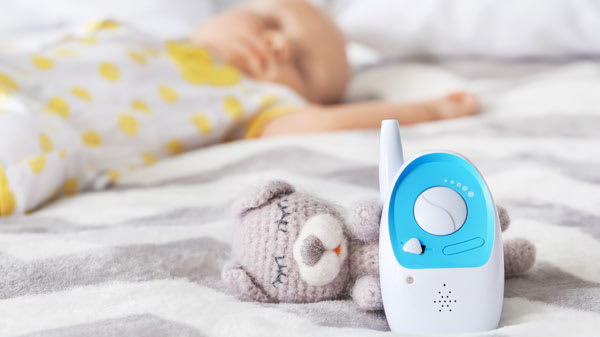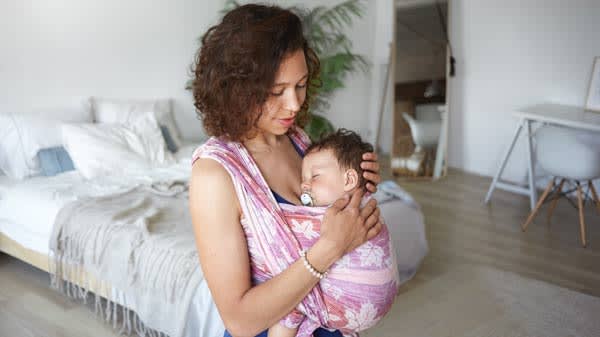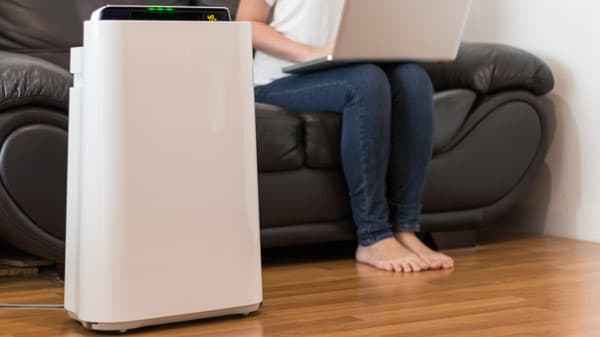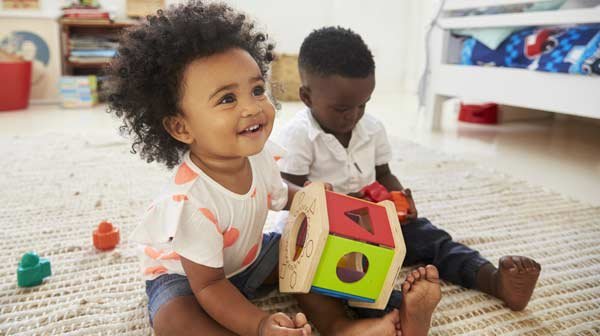How to know if a baby car seat is really safe?
The homologation standards do not require the most rigorous tests and some car seats can put the safety of the little ones at risk.
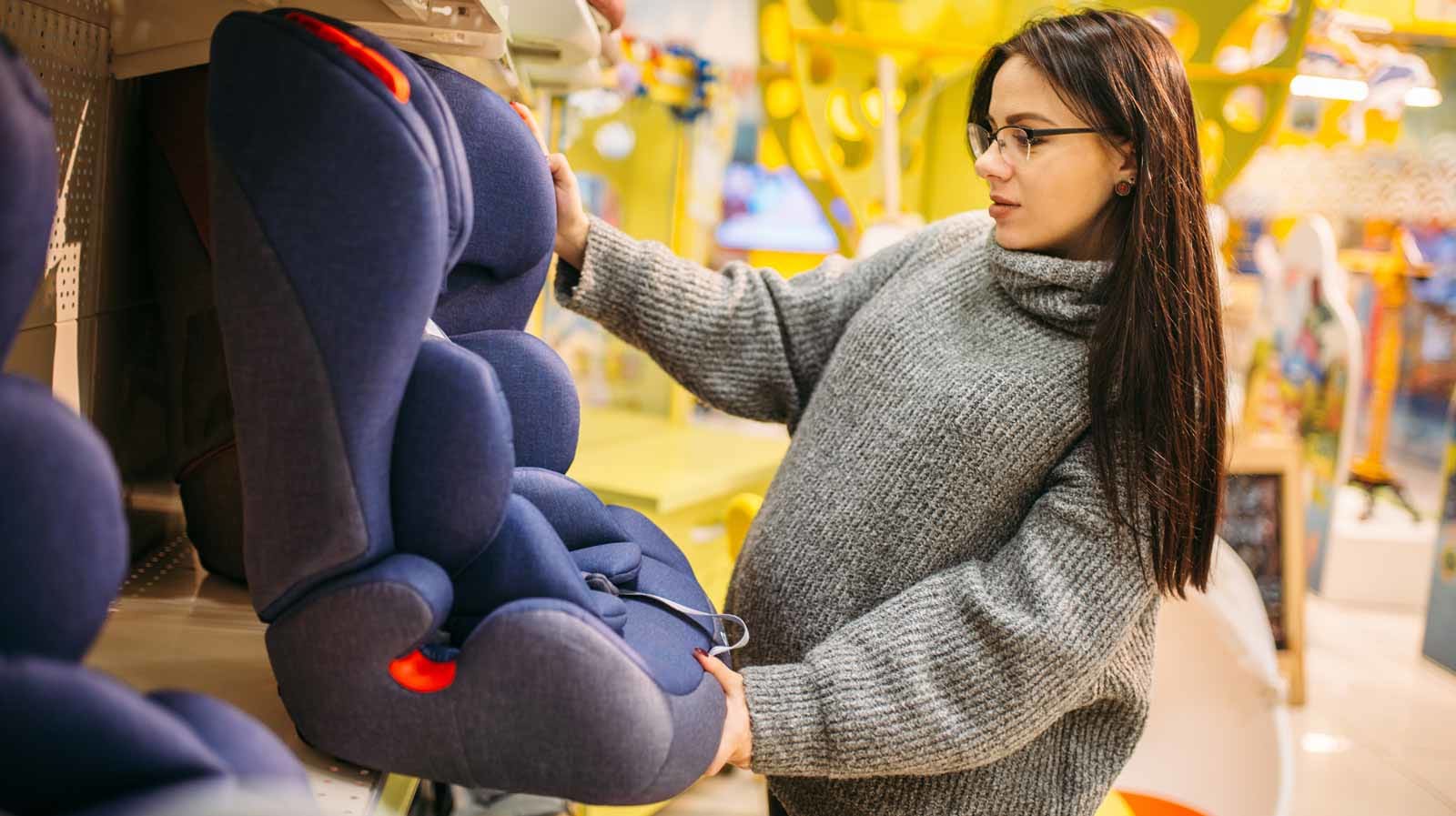
When it comes to transporting babies and children, safety must always come first. The child restraint system your child will use is one of the most important items you will buy. There are plenty of car seats on the market, but for them to be considered safe, they need to be tested and evaluated under extreme conditions in a laboratory.
Are the approved chairs always tested?
All car seats approved by standards R44/04 and R129 (i-Size) go through tests before being approved. However, these tests are not considered sufficient by some independent organisations. Believe it or not, standard R44/04 does not require a lateral impact test to approve the car seats, for example.
Independent tests
To make sure you are getting a good baby car seat, it is important that it has had good results in independent tests. Car seat tests are carried out by a consortium of different mobility clubs and consumer protection organizations once or twice a year. The mobility clubs and consumer protection organizations (such as RACE, RACC, OCU) publish the test results.
The most well-known tests in Europe are carried out in Sweden and Germany: the Plus Test and the ADAC, respectively. But there are other organisations, such as ÖAMTC (Austrian Automobile, Motorcycle and Touring Club), Touring Club Switzerland (TCS - Swiss Automobile Club) and the Stiftung Warentest (German consumer organisation).
Here, at The Baby Blog, you will find the ADAC results and car seats with the Plus Test seal.
Plus Test
Plus Test is a internationally recognised seal. The test itself consists of a frontal collision at 56.5km/h, with a short and hard braking distance, making the impact even more severe.
The test is conducted in Linköping, by the Swedish National Road and Transport Research Institute (VTI), and manufacturers participate voluntarily. Group I (between 9 and 18 kg) and Group II (between 15 and 25 kg) car seats are tested.
The Plus Test focuses its tests on rear-facing car seats and evaluates the impact of the accident on the neck area during a frontal collision. The requirements of the Plus Test are so rigorous that forward-facing child chairs would not be able to meet them.
ADAC tests
The ADAC (Allgemeiner Deutscher Automobil-Club) is a German automotive organisation with over 15 million members and is recognised, as is the Plus Test, for carrying out rigorous tests on car seats.
The ADAC carries out tests to measure frontal and lateral impacts. The seats are purchased anonymously off the market and are put to the test under extreme conditions. In addition to carrying out a higher number of tests, the speeds in impact tests are higher than those required by standards.
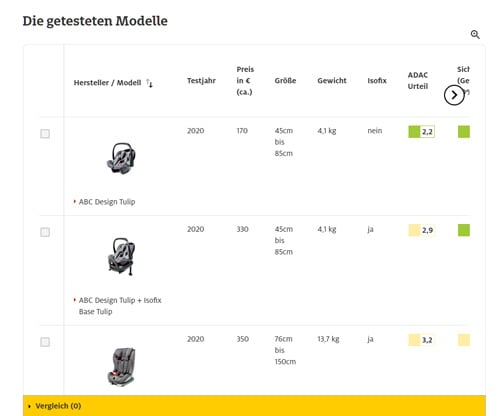
What are the ADAC tests like?
In the ADAC tests carried out, car seats are evaluated on the following items:
•Safety
Crash-tests are conducted to check the behaviour of the car seat during collisions. The tests are done with the help of dummies, which are mannequins with weight and shape similar to those of a child and are equipped with sensors to measure the force of impact on the most sensitive points of the body.
•Operation
Are assessed items such as the installation procedure, operation of the car seat and the proper positioning of the safety belt. If there are difficulties in installation or room for errors, the car seats are penalised in the evaluation.
•Ergonomy
The ergonomics items assessed are: the available space for the child, the sitting position, the space requirements in the car and the ease of installation of the car seat.
•Cleaning
The quality of the finish and materials of the car seat are assessed, as well as the ease of cleaning and maintenance of the car seat.
•Chemicals
The assessment of the chemicals is not exactly a criteria, but an increase in a chemical content can worsen the score of a car seat.
Chemical and toxicity tests are carried out on all materials of the seat that come into direct contact with the child to determine if there is any risk.
How are the results measured?
Each of these items has a different weight and for the final score safety, operation and ergonomics will be taken into consideration. These criteria have a weight of 50, 40 and 10 respectively.
If the car seats present dangerous chemicals in their materials, the car seats will be penalised in the overall ranking.
After testing and evaluating the car seats on all the items mentioned above, ADAC issues an overall ranking for each car seat and a score, which can be:
•Very Good ++ (0.6 to 1.5)
•Good + (1.6 to 2.5)
•Satisfactory o (2.6 to 3.5)
•Sufficient ø (3.6 to 4.5)
•Poor - (from 4.6)
That is to say, this rating means that the lower the result, the better. Check out the video below for some images of the tests carried out by ADAC on car seats:
Are car seats 0+123 and 123 safe?
"What are the best Group 0+123 car seats?" is a question asked by parents often. We, at The Baby Blog, advocate that car seats should be bought in stages according to your child's development. First a Group 0+ infant seat, then, a Group 1/2 seat that allows them to travel in a rear-facing position for as long as possible, and finally a Group 2/3 seat. By doing this, you can rest assured that your child is safe.
Results of the ADAC and Plus Test of car seats.
The Baby Blog has a dedicated section with all the results of the tests conducted by ADAC on car seats since 2015. In addition to the ADAC results, it is also possible to find the seats that have the Plus Test seal, that is, seats from group I and group II.
There are many models tested and all the traditional brands, such as Cybex, Britax Römer, Maxi-Cosi, Bébé-Confort, Chicco, Hauck etc. If your model doesn't appear on the list, that doesn't mean it's bad, but it means it hasn't been tested by the ADAC. Check with the manufacturer to know which tests have been done, but if in doubt, don't take a risk.
